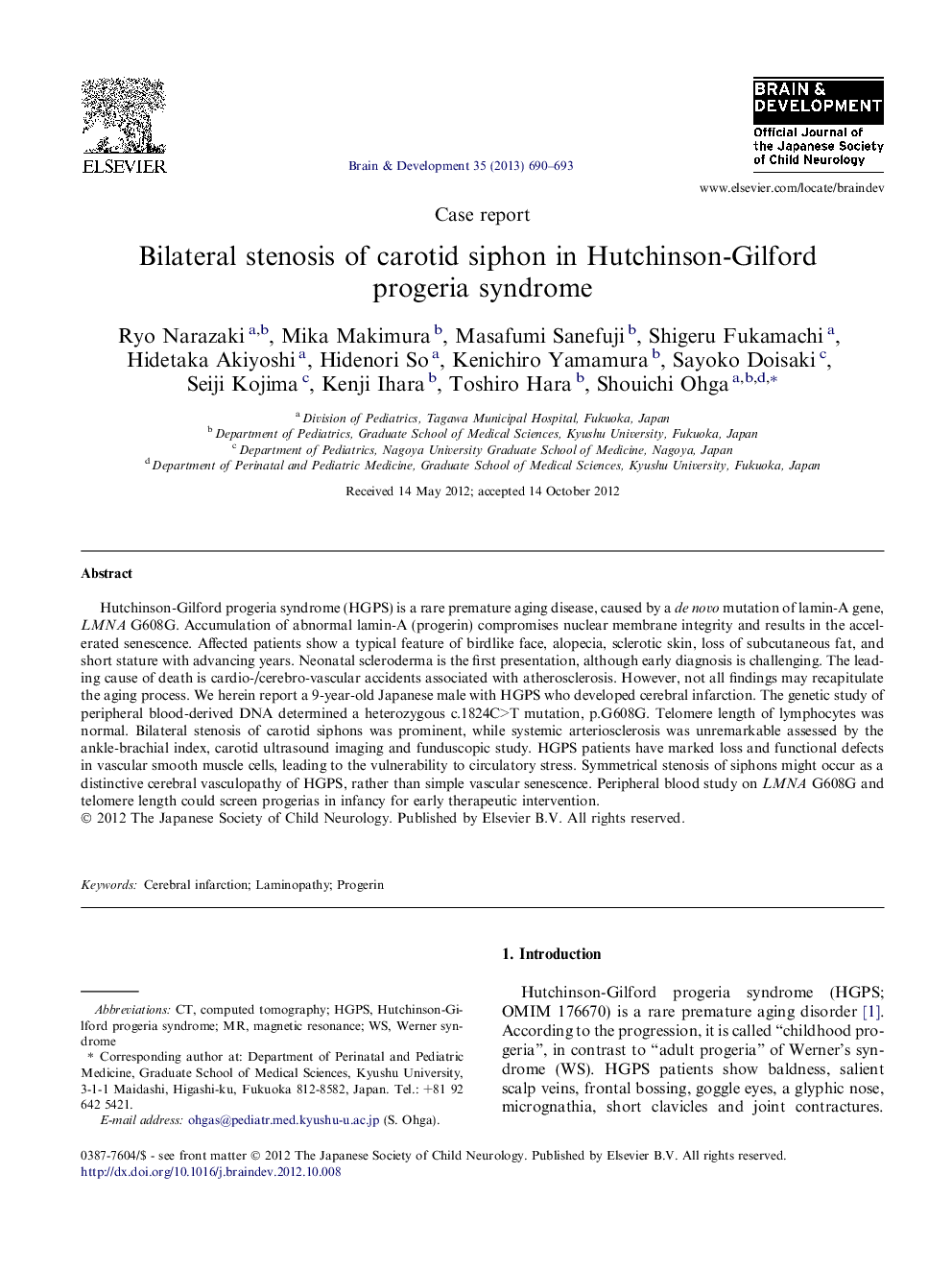| Article ID | Journal | Published Year | Pages | File Type |
|---|---|---|---|---|
| 3037263 | Brain and Development | 2013 | 4 Pages |
Hutchinson-Gilford progeria syndrome (HGPS) is a rare premature aging disease, caused by a de novo mutation of lamin-A gene, LMNA G608G. Accumulation of abnormal lamin-A (progerin) compromises nuclear membrane integrity and results in the accelerated senescence. Affected patients show a typical feature of birdlike face, alopecia, sclerotic skin, loss of subcutaneous fat, and short stature with advancing years. Neonatal scleroderma is the first presentation, although early diagnosis is challenging. The leading cause of death is cardio-/cerebro-vascular accidents associated with atherosclerosis. However, not all findings may recapitulate the aging process. We herein report a 9-year-old Japanese male with HGPS who developed cerebral infarction. The genetic study of peripheral blood-derived DNA determined a heterozygous c.1824C>T mutation, p.G608G. Telomere length of lymphocytes was normal. Bilateral stenosis of carotid siphons was prominent, while systemic arteriosclerosis was unremarkable assessed by the ankle-brachial index, carotid ultrasound imaging and funduscopic study. HGPS patients have marked loss and functional defects in vascular smooth muscle cells, leading to the vulnerability to circulatory stress. Symmetrical stenosis of siphons might occur as a distinctive cerebral vasculopathy of HGPS, rather than simple vascular senescence. Peripheral blood study on LMNA G608G and telomere length could screen progerias in infancy for early therapeutic intervention.
